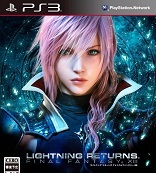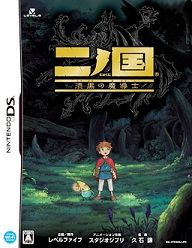« PS3 RPGs: Final Fantasy XIII walkthrough, FFXIV, Resonance of Fate, Ar Tonelico III | Main | Etrian Odyssey III character classes: new screens, art »
RPG Land Remembers 2004
By Heath | December 25, 2009 at 11:44 pm
Five years ago, big things were happening in RPG Land. Remember what was goin’ down?
But gamers don’t have real friends…
The PS2 would kickoff 2004 on the multiplayer front, busting out Champions of Norrath, a multiplayer RPG featuring same-console cooperation ala the GameCube and Xbox’s versions of Phantasy Star Online. The multiplatform Baldur’s Gate: Dark Alliance II shares the same concept. And involving absolutely no online play at all despite confusion to the contrary, .hack//Quarantine would round out the PS2’s first group of .hack titles. Quarantine concluded the epic story while delivering endgame bonuses mostly in the forms of playable .hack//SIGN characters. Popular yet divisive MMORPG Final Fantasy XI‘s PS2 version would also launch in 2004’s first quarter; it would later expand with Chains of Promathia.
Compubox
The Xbox would have a decent year in 2004, but for all its quality RPGs, it wouldn’t really have many to call its own. Popular sequel Baldur’s Gate: Dark Alliance II, movie-whoring Lord of the Rings: The Third Age, and multiplayer action RPG romp X-Men Legends were all strong enough games which will make many a gamer smile to remember, but they were all shared with at least one other system — most often, PS2 and PC, though GameCube shared a few as well.
Star Wars: Knights of the Old Republic II picked up right where its predecessor left off, with the Jedi on the ropes and practically at the mercy of the Sith. Players, taking control of a former Jedi knight, would eventually turn to the Light Side or Dark Side, depending on their choices and actions throughout the game. The Xbox version of this game would be out in December of 2004, while those in PC RPGLand would have to wait until February of 2005.
A cube-shaped crown
One could make a good case for 2004 being the GameCube’s best year. Nintendo had been slipping and falling all over the place in the previous few years, but in 2004, the Cube would see some high-profile exclusives, a star among them Namco’s Tales of Symphonia. Heralded by many as the best of the Tales series, especially at that time, the game would be a Nintendo system seller to JRPG fans in North America — moreso in Japan, as the game was launched alongside a mint green Symphonia GameCube. And speaking of Japan, Symphonia was ported to PS2, but that version was not launched overseas.
Square Enix’s one and only GameCube title would launch in 2004, in the form of a cooperative Final Fantasy spinoff. Final Fantasy Crystal Chronicles, with co-op play for up to four, followed the RPG trend of placing gamers in a world plagued by evil mist. When playing alone, a player used the GameCube’s standard controller, but with multiplayer, each member of the team needed a Game Boy Advance to use as his/her controller; these would be connected to the console via a special sold-separately cable with practically no other uses, which pissed off a lot of people. Initially, it was widely reported that the game would also be for the Game Boy Advance, but this was not the case. Oh, media!
A first-party RPG would also put a feather in the Cube’s cap that year in Paper Mario: the Thousand-year Door. Our own Orie house declared that it was one of few games that “Grabbed me by the nuts and wouldn’t let go.” Meanwhile, Pokémon would represent with Pokémon Colosseum. GameCube would also share X-Men Legends, Mega Man X: Command Mission, and Future Tactics, among others, with other consoles that year.
Baten Kaitos, made by some members of the Xenosaga team would also bolster the GameCube’s 2004 lineup. The game was largely praised for its visuals, music, and anti-traditional approach to stagnating JRPG systems, though conversely, many sneered at its battle system’s use of cards — a big trend at the time.
November would see the beginning of a revolution. As has been well documented in previous installments of this retrospective, MMORPGs were on the rise in popularity. In November, one of the biggest names in gaming would take its world online in massively multiplayer fashion: Warcraft. Blizzard’s World of Warcraft was an instant success, selling beyond expectations and holding a tight grip on a high amount of the players that joined. What Blizzard did particularly well was deliver a game that was very accommodating and enjoyable for MMORPG first-timers and more casual gamers, which was oddly rare among the MMORPGs of the time. The Warcraft name and its overal ease to play made it highly appealing, and even today, five years later, World of Warcraft reigns supreme among MMORPGs in North America.
Not to go down without a fight, former champion Sony Online Entertainment launched EverQuest II in the same month as World of Warcraft, and there was a great debate in the MMO world about which one was more worth the purchase. General consensus was that EverQuest II seemed better for fans of the original EverQuest (surprise?) and perhaps the more “hardcore” MMORPG crowd, while World of Warcraft seemed more casual. As a close observer of MMO goings on, I must tip my hat to EverQuest II‘s smooth launch. I didn’t play the game myself at the time, but by all reports the game was considerably less buggy than MMORPGs tend to be when they first drop.
Lineage II would garner a decent following in North America, though not quite as big as its international base. The game took off huge in Asia. EverQuest II…Lineage II…adding another II to the list of RPGs that year would be Dungeon Siege II, the sequel to the popular 2002 title by Gas Powered Games. The game was decently received by fans but less so by critics, some of whom are dead. Heavy.
Of the expansions to be released in 2004, Anarchy Online: Alien Invasion rocked the most ass, but on the personal level, Ultima Online: Samurai Empire was the nearest to my heart.
Advance One Step, Retreat Two
The Game Boy Advance’s lineup in 2004 would consist of ports and spinoffs. River City Ransom EX, a portable version of the fondly remembered NES game, would be the year’s first (enhanced) port to hit the machine. Indeed, Ryan and Alex hit the streets again in the short and sweet 2D Beat ’em up RPG. Nintendo would then slap some makeup on two older Pokémon titles and re-release them for Game Boy Advance in the forms of Fire Red and Leaf Green. Arriving in November would be Final Fantasy I&II: Dawn of Souls. Coupled with the PlayStation’s 2003 release of Final Fantasy Origins, this would mean enhanced ports of Final Fantasy and Final Fantasy II would be released in back-to-back years.
A headliner in GBA’s 2004 crew was Kingdom Hearts: Chain of Memories. “Chain” was an appropriate title, because most fans, coming fresh off a fun action RPG on PS2, were disappointed by the oddly difficult card-battling style. Elsewhere on the Advance, the sunlight-absorbing stylings of Metal Gear creator Hideo Kojima were back, as Konami’s Boktai 2: Solar Boy Django was released. Mega Man Battle Network, always underreported and underrated, quietly snuck its fourth title onto the GBA that year, with Mega Man Battle Network 4.
Among disappointments in 2004, perhaps none remain more talked about among JRPG players than Suikoden IV. After two legendary PSX titles and a well-received first PS2 outing in 2002, Suikoden fans had high expectations for Suikoden IV; most would feel that this title fell short of them. Less disappointing but still received in a lukewarm fashion was GameCube-exclusive Phantasy Star Online Episode III: C.A.R.D Revolution. Among its biggest criticisms were its card-centric battle system, and among its perks were of course the ability to play online against others, or have head-to-head bouts on the same console.
With the success of 2003’s Disagea, Mastiff games published La Pucelle Tactics, which was an older game than Disgaea, but didn’t quite have as much hope of performing well in the NA market before Disgaea blazed the trail for Nippon Ichi games. Thanks to this rise in Nippon Ichi popularity and increased interest in the company’s older games, I was able to sell Rhapsody (PSX) for $92 on eBay, whereas I’d only paid $30 for it just a year prior. I win.
Nippon Ichi’s presence in 2004 would also be felt in Phantom Brave. A tactical RPG, PB freed itself from the grid of squares that virtually every TRPG before had used. Instead a number of squares determining possible walking distance, each character had a movement radius. The same idea applied to attacks and skills; an enemy could be out of range by “just a hair” instead of “one space.” As with almost anything new, it was somewhat divisive among NIS’s newly formed fanbase. Phantom Brave was the first title shipped by Nippon Ichi’s stateside publishing house NIS America.
A third entry in the Star Ocean series would be released in 2004, five years after the second graced the original PlayStation. Many gamers found the game delightful at first, but it’s widely agreed upon that the game kinda slows down towards the end, and Star Ocean III: Till the End of Time is perhaps most famous for having one of the worst plot twists of all time. In case you’re wanting to play it, perhaps out of curiosity created by this article, I won’t say it here. Google “Star Ocean III plot twist” and you’ll get it.
Shin Megami Tensei‘s real popularity in North America would not quiiite hit in earnest yet, but SMT: Nocturne would bring it a step closer. The game was darkly themed, praised for its music and story, and drew several comparisons to Pokémon. Another dark sequel would see daylight in 2004 as well: Shadow Hearts Covenant. The judgment wheel battle system was back and modified to allow a wide variety of combos for those skilled enough to pull them off.
Square Enix put out a pair of somewhat lesser-remembered RPGs that year in the forms of Front Mission 4 and Drakengard. The former was a sequel to the PlayStation hit tactical RPG and the latter was a fierce action RPG featuring the ability to ride on dragons.
In December, cult favorite localization house Working Designs would publish its final title, Growlanser Generations. This pack launched Growlanser II and Growlanser III in the same bundle and achieved a ranking of “Great” in Orie’s review.
Getting releases on Xbox, PC, and PS2 in 2004 would be The Bard’s Tale, which was more of a “Monty Python and RPGs” experience. Throughout the game, players encounter hilarious spoofs and references to tried-and-true RPG stereotypes, and the gameplay wasn’t too bad either.
RPG System of the year 2004: GameCube. There were some divisive titles for sure, but I think in terms of quality and especially bang for your buck, GameCube surprised everyone and stole the year 2004. Oh and yeah, I’m adding a “System of the Year” thing at the end of these now.
A lot went down in 2004. 2005 promises nothing less.
Relevant Links:
RPG Land Remembers 2003
RPG Land Remembers 2002
RPG Land Remembers 2001
RPG Land Remembers 2000
Become a fan on Facebook.
Topics: Games of the Decade, History of..., Specials
















